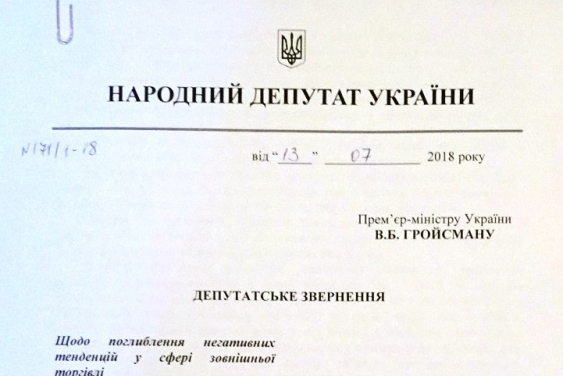Despite a certain growth in exports for the first four months of 2018, its volume has not reached the pre-crisis level. Now it is only three-fourths of the 2013 indicator and 68% of 2012. In this regard, the deputy head of the Opposition Bloc faction, Serhiy Lovochkin, addressed the Prime Minister, Volodymyr Groisman, with a demand to take systematic measures in terms of export growth.
“First of all, it is about increasing the effectiveness of state support of domestic exporters, promoting Ukrainian products on the foreign market, maximizing the opportunities provided by the economic part of the EU-Ukraine Association Agreement,” said in the request to the Prime Minister.
According to Serhiy Lovochkin, even a slight improvement in export growth in 2018 has an unstable basis, since about two thirds of its volume are raw materials and products with low added value. In turn, this is a consequence of not effective actions for carrying forward Ukrainian goods, and favorable external trading environments that can change rapidly.
“In addition, the raw material of Ukrainian exports, which continues to prevail in metals, vegetable products, fats and oils, means that in Ukraine, in fact, there are no developing industries that could ensure the creation of more work places and budget contributions, than the export of raw materials and products with a low degree of processing: only 10% is for the production of machine building, only 1,3% - for cars, aircraft and vessels,” the politician noted.
According to him, at the same time, the volume of machine-building products imported into Ukraine continues to grow – since the beginning of this year it has been imported by 23% more than in the past.
“This indicates a profound degradation of domestic engineering, which not only cannot produce modern competitive products in a demand on the foreign market, but is also less able to meet the needs of the domestic market. A similar situation is observed in enterprises of shipbuilding and aircraft construction, whose activities are reduced mainly to repair and service maintenance,” Serhiy Lovochkin considers.
The opening of the EU market for Ukrainian goods has not lead to a significant increase in exports in this direction. Thus, from 2013 to 2017, Ukrainian exports to the EU in monetary terms grew only by 4.6% or $ 0.77 billion. It is $ 0.5 billion less than in 2011 and by $ 0.7 billion more than in 2008.
“The mentioned growth looks scanty compared with the fall of Ukrainian exports to the CIS countries, which fell during this period by $ 15.2 billion,” the MP reminded.
Follow @serhiylovochkin